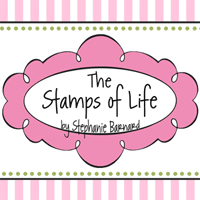The Shamrock
The shamrock, which was also called the "seamroy" by the Celts, was a sacred plant in ancient Ireland because it symbolized the rebirth of spring. By the seventeenth century, the shamrock had become a symbol of emerging Irish nationalism. As the English began to seize Irish land and make laws against the use of the Irish language and the practice of Catholicism, many Irish began to wear the shamrock as a symbol of their pride in their heritage and their displeasure with English rule.
Irish Music
Music is often associated with St. Patrick's Day—and Irish culture in general. From ancient days of the Celts, music has always been an important part of Irish life. The Celts had an oral culture, where religion, legend and history were passed from one generation to the next by way of stories and songs. After being conquered by the English, and forbidden to speak their own language, the Irish, like other oppressed peoples, turned to music to help them remember important events and hold on to their heritage and history. As it often stirred emotion and helped to galvanize people, music was outlawed by the English. During her reign, Queen Elizabeth I even decreed that all artists and pipers were to be arrested and hanged on the spot.
Today, traditional Irish bands like The Chieftains, the Clancy Brothers and Tommy Makem are gaining worldwide popularity. Their music is produced with instruments that have been used for centuries, including the fiddle, the uilleann pipes (a sort of elaborate bagpipe), the tin whistle (a sort of flute that is actually made of nickel-silver, brass or aluminum) and the bodhran (an ancient type of framedrum that was traditionally used in warfare rather than music).
The Snake
It has long been recounted that, during his mission in Ireland, St. Patrick once stood on a hilltop (which is now called Croagh Patrick), and with only a wooden staff by his side, banished all the snakes from Ireland.
In fact, the island nation was never home to any snakes. The "banishing of the snakes" was really a metaphor for the eradication of pagan ideology from Ireland and the triumph of Christianity. Within 200 years of Patrick's arrival, Ireland was completely Christianized.
Corned Beef
Each year, thousands of Irish Americans gather with their loved ones on St. Patrick's Day to share a "traditional" meal of corned beef and cabbage.
Though cabbage has long been an Irish food, corned beef only began to be associated with St. Patrick's Day at the turn of the century.
Irish immigrants living on New York City's Lower East Side substituted corned beef for their traditional dish of Irish bacon to save money. They learned about the cheaper alternative from their Jewish neighbors.
The Leprechaun
The original Irish name for these figures of folklore is "lobaircin," meaning "small-bodied fellow."
Belief in leprechauns probably stems from Celtic belief in fairies, tiny men and women who could use their magical powers to serve good or evil. In Celtic folktales, leprechauns were cranky souls, responsible for mending the shoes of the other fairies. Though only minor figures in Celtic folklore, leprechauns were known for their trickery, which they often used to protect their much-fabled treasure.
Leprechauns had nothing to do with St. Patrick or the celebration of St. Patrick's Day, a Catholic holy day. In 1959, Walt Disney released a film called Darby O'Gill & the Little People, which introduced America to a very different sort of leprechaun than the cantankerous little man of Irish folklore. This cheerful, friendly leprechaun is a purely American invention, but has quickly evolved into an easily recognizable symbol of both St. Patrick's Day and Ireland in general.













1 comments:
Finally someone who explains this St. Patrick tradition! Thanks Christy! You´re the best! /Pia
Post a Comment
All of your comments mean so much to me! Thank you for taking the time to do so.
Smiles!
Christy